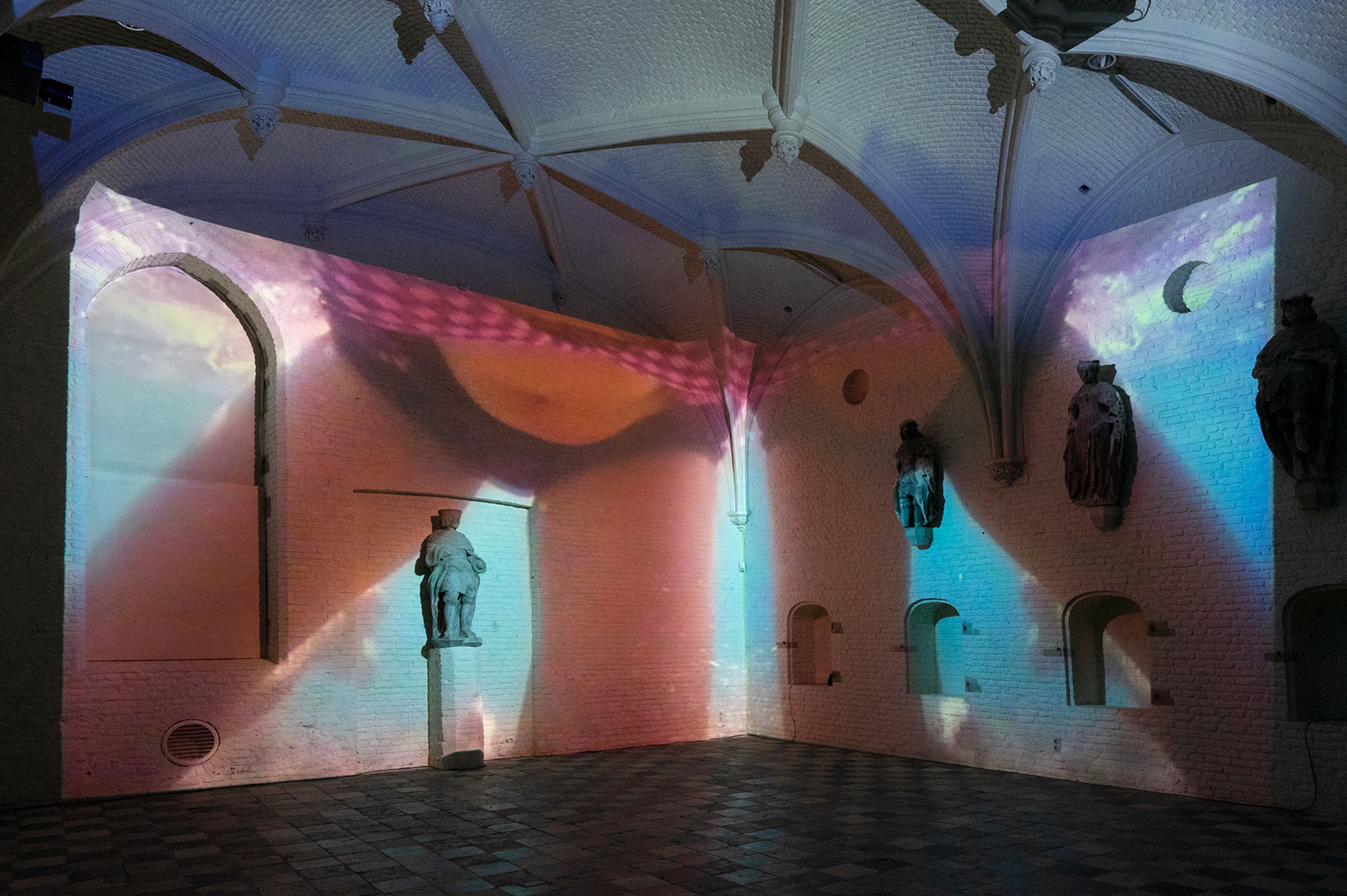Grossmut begatte mich
Pipilotti Rist
Video/Film, Installation
1995
This text is only available in Dutch
De video-installatie Grossmut begatte mich (1995), waar een aantal varianten van bestaan, is een sleutelwerk van Pipilotti Rist. De eerste variant van het werk werd in 1995 getoond tijdens de spraakmakende tentoonstelling Wild Walls in het Stedelijk Museum Amsterdam. Door het vrije spel met elementen uit de wereld van videoclips, het toelaten van de persoonlijke belevingswereld en de haast ongegeneerde inzet van zoetsappig sentiment maakte het diepe indruk. Vleeshal kocht destijds als eerste kunstinstelling werk van de nu wereldberoemde Rist aan. De kunstenaar zorgde ervoor dat het werk een relatie aangaat met de gotische architectuur van de Vleeshal, die als achtergrond dient voor de metershoge videoprojectie.
De dubbele, gespiegelde video-projectie bestaat uit deinende beelden die met een onderwatercamera zijn gemaakt; het perspectief van een koraalvis die door een paradijselijk rif van blote, vrouwelijke onderlijven en bikini’s lijkt te zwemmen. Na verloop van tijd verschijnen verschillende huishoudelijke voorwerpen die langzaam wervelend hun weg naar de zeebodem vinden. Tegen het plafond drijven lichtblauwe wolken voorbij over het gotische spitsbogengewelf van de Vleeshal. De hypnotiserende video-installatie wordt begeleid door een onorthodoxe cover door Rist zelf van Chris Isaak’s melancholische hitnummer ‘Wicked Game’. Rist’s stemgeluid begint aangenaam, bijna aarzelend, maar maakt op een gegeven moment plaats voor een uitzinnig geschreeuw dat de idyllische onderwaterdroom lijkt te verstoren.
Persons
Pipilotti RistSeries
Vleeshal is a unique center for contemporary art, not only because of its atypical exhibition space and exciting programming, but also because it has a collection. In the 1990s, under the impetus of then director Lex ter Braak, an ambitious collection of contemporary visual art was begun. This collection was intended for a newly envisioned museum in Middelburg, designed by Aldo and Hannie van Eyck. In 1995 it became clear that, unfortunately, there was insufficient political support for this museum. The impetus of collection building had therefore lost its possible context and visibility and encumbered Vleeshal. The collection had become a storage cost and management issue.
In 2005, the collection was given on a long-term loan to M HKA in Antwerp. M HKA was chosen because of the close historical ties between Middelburg and Antwerp, the museum's collection profile, and the fact that M HKA's director, Bart De Baere, was a member of the committee that purchased artworks for the yet-to-be-built museum in Middelburg in the 1990s.
The collection consists of two parts. One part includes national and local art from the BKR arrangement (the Dutch abbreviation BKR stands for Beeldende Kunstenaars Regeling, an arrangement, which from 1949 to 1987 provided artists with a temporary income in exchange for works of art or other artistic quid pro quo). The other part consists of artworks by international contemporary artists (including Jimmie Durham, Nedko Solakov, Suchan Kinoshita, Cameron Jamie, Pipilotti Rist, and Job Koelewijn).
There has been no active acquisition policy for years. The collection is expanded here and there with sporadic purchases and donations from artists who are part of the Vleeshal program.
